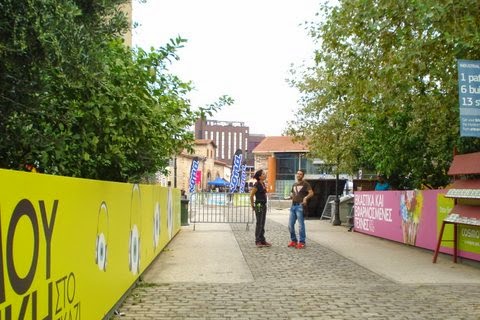Plaka
There's a lot more than ancient Greek ruins around Athens. In the Plaka you'll find remains of the Romans and Ottoman Turks as well as the Classical. The Romans took control of the city in the second century BC and added some of their own architectural splendor, though it could never match the Greek's. During his reign from 117 - 138 AD the Emperor Hadrian left his mark in many areas. www.europeupclose.com/article/greece-hadrians-athens/ Beyond Hadrian's Arch which marked the border of Classical Athens, was the Roman city, including the Roman baths. Although it had been begun centuries earlier, he also put the finishing touches on the Temple of Olympian Zeus. Hadrian built a library in the Plaka area and nearby is the Roman Forum with it's notable Tower of the Winds. Years later, a wealthy Roman senator built the Herodes Atticus theatre in honour of his wife. Today the "Herodian" is a popular theatre for nusic concerts and staging ancient dramas.
Roman Forum
The Tzistarakis mosque, built in 1759, dominates Monastiraki Square. It is now the Museum of Greek Folk Art: Ceramics Collection. Take time to go inside and see the collection of pottery and other artifacts
Tzistarakis Mosque
The oldest mosque in Athens, the Fethiye Tzami built in 1458 occupies a corner of the Roman Forum. It is now used to store artifacts found around the site.
Across from the Forum entrance are the remains of the medresse, an Islamic school. During the Ottoman rule and Greek independence it was used as a prison and notorious for it's harsh conditions. A tree inside the courtyard was used for hangings. The prison was closed in the early 1900's and most of it was torn down.
Turkish Medresse
A place that has always intrigued me, is the Turkish bath house. Finally this time in Athens I was lured inside and spent a pleasant hour wandering the halls and rooms. It was originally built in the 1450's and has been carefully restored. Roman and Byzantine bath-houses served as models for the Turkish hammams though there were some differences to meet the prescription of the Koran. The baths were used in shifts by men and women until an expansion in the 19th century provided more space for what you see today. Restoration work was completed in 1998. It's called "The Bath-house of the Winds" and is located at Kyrrestou 8, a street that leads to the back of the Roman Forum near the Tower of the Winds. It's open Mon & Wed- Sun 9 am- 2.30 pm. Free.
Bath-house of the Winds
Museum of Greek Folk Instruments









































































